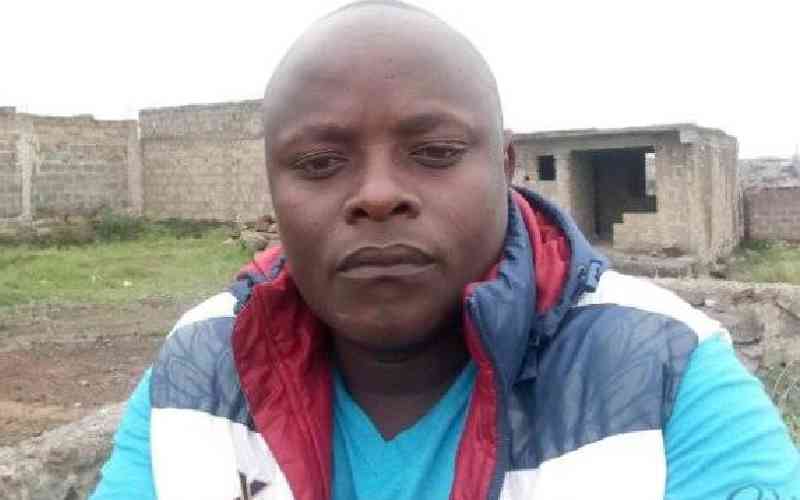The Kirima land tussle turned tragic for a family in Njiru, Nairobi County.
The family of Charles Odhiambo is struggling to come to terms with his death after he succumbed to a gunshot wound on Thursday over the bitter land dispute.
Odhiambo, who died at Anka Hospital in Eastleigh, was shot in the right thigh on June 13 by individuals who were attempting to sell an undeveloped piece of land in Kamatuto, Njiru. The High Court ruled that the land belonged to the family of the late politician Gerishon Kirima.
The incident was reported to Njiru and Obama police stations. The family claims that the suspect was disarmed by police officers but was never arraigned in court.
“They were not arrested and not taken to court,” a family friend told The Saturday Standard.
Odhiambo’s father, George Odongo, wants justice for his son: “I do not know what happened because at the time I was in Malindi. I was called and told that he had been shot and taken to the hospital. I tried to make calls to facilitate the admission.”
The family is now calling on the Director of Criminal Investigations boss Mohamed Amin, to order probe into Odhiambo’s death.
Witnesses claimed that Odhiambo was involved in an argument over the plan to sell a piece of land in the area after residents confronted the sellers.
“When they started taking the land measurements, the neighbours protested, and Odhiambo was among them,” said a witness.
This comes after a controversial preacher who had leased a piece of land from a resident decided to buy it from the Kirima family after the court decision. As a result, Kiamututo residents have become wary of visitors to the area, fearing they might sell the land where their houses sit.
Odhiambo’s family and friends want investigators from DCI headquarters to probe the incident, as they do not trust the Kayole DCI officers.
They claim that despite reporting the incident and the alleged shooter being disarmed, no action has been taken, even though witnesses have identified the suspect. They accused the officers of shielding the suspect.
Odongo is distraught after he failed to locate another son who has been missing since 2021. In a case of double tragedy, his other son, Dennis Odhiambo, went missing after being picked up by people believed to be police officers.
He was picked from his clothing business in Ruiru by people who identified themselves as police officers.
Dennis’s friends, who spoke to KTN News said he was singled out from a group of youths who were chewing khat. He was ordered to surrender his phone, which was then switched off. The alleged officers then left with him and that was the last time he was seen alive. By Fred Kagonye, The Standard






